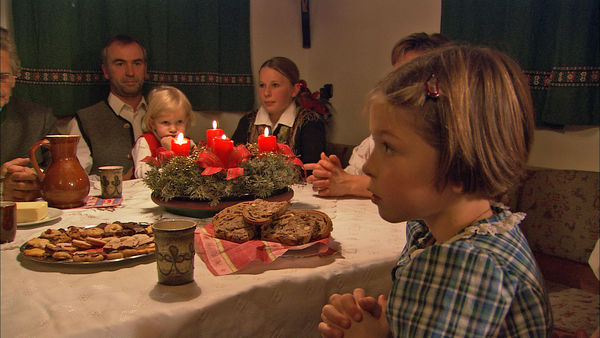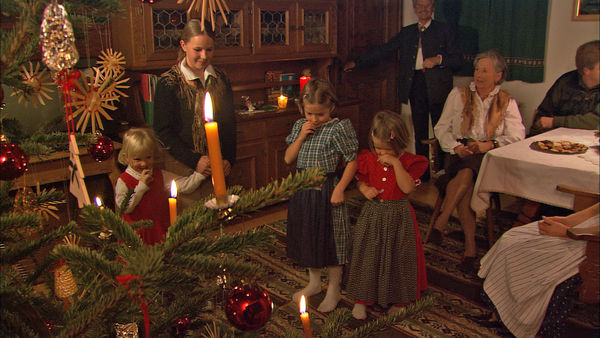Christmas in Austria
By Rick Steves

The festive swirl of heartwarming sights, sounds, and smells of Christmas abound in Austria — the land where the season's most-loved carol, "Silent Night," was first performed over 200 years ago.
Austria is known for its slow-paced, stop-and-smell-the-strudel attitude. For Christmas, Austrians start early, go slow, and touch all the holiday bases. It all begins four Sundays before Christmas with Advent, the period awaiting the "arrival" of Jesus. Families make or buy an Adventkranz (Advent wreath), usually made of fir or spruce. It's decorated with four candles that are lit successively on the four Sundays leading up to December 24.
December 5 is Krampus Day. With frightening fur, bulging eyes, and a long red tongue, Krampus runs through the streets of alpine villages creating chaos — banging huge cowbells and rattling chains wildly — trying to scare kids into being good. But it's all done in fun, with much teasing and laughter, and children and adults get back at the horned devil by pelting him with snowballs. Krampus' true purpose is simply to remind kids to behave well, and in this way he acts as a companion to St. Nicholas.
The following day, December 6, is the feast day of St. Nicholas, the patron saint of children, who's widely honored throughout Austria. Nicholas is an "ancestor" of Santa Claus and a "relative" of Father Christmas (both celebrated on Christmas Eve and Day), but in Austria his feast day is a big deal, and separate from Christmas. With his traditional flowing robe, tall bishop's miter, and shepherd's staff, he parades through town carrying a thick book in which children's good and bad deeds are recorded.
Sometimes St. Nicholas is accompanied by his devilish assistant, Knecht Ruprecht (a regional version of Krampus). Knecht Ruprecht dresses in rags, with a sack over his shoulder to carry off naughty kids. In typical good-cop/bad-cop style, Nicholas gives out sweets and apples to the good children while his companion playfully beckons "little sinners" to feel the sting of his golden rod.
Sweets and treats are a hallmark of the holiday season. In Salzburg, it's easy to work up an appetite at the Christkindlmarkt, with its wafting aromas of pretzels, sausages, roasted chestnuts in paper cones, and hot spiced wine. Booths also sell Christmas candies and cookies, and inviting cafés offer a cozy hot chocolate and strudel break. And from the castle ramparts, high above town, the roar of cannons announces the Christmas season, the traditional gunners celebrating as they have since they really believed these shots would scare away evil.
Salzburg, nicknamed "the Rome of the north," has a magnificent cathedral, inspired by St. Peter's in Rome. The archbishop leads the service as the cathedral choir and orchestra, filling the loft in the back of the nave, perform a Christmas Mass. Locals here in the town of Mozart pack the place to mix worship with glorious music.
One of the season's most iconic songs, "Silent Night," originated in this region. According to legend, Joseph Mohr, a priest, went out one Christmas night to bless a newborn baby. As he walked home in the snow, he was so moved by the stillness of the starlit, holy night that he wrote a poem about it. He later gave the poem to Franz Gruber, his church organist, who quickly composed a tune. On Christmas Eve of 1818 the carol was sung for the first time in the village church, accompanied only by a guitar. No one could have known the impact this composition would have on the world.
A few years ago, I visited the small town of Arnsdorf at Christmastime. In the very house where Franz Gruber lived when he composed the music, they held a late afternoon service that featured a performance of the song. Then villagers and visitors lit candles and sang carols on their way to nearby Oberndorf, following the same path through the same cold December twilight air that inspired Joseph Mohr's original poem. In Oberndorf, they congregated at the Silent Night Chapel, which is built on the site of that first "Silent Night" performance in 1818. (The original church was torn down in the early 20th century.)
In Austria today there are Silent Night museums, memorials, and markers in Salzburg, Oberndorf, Arnsdorf, and a dozen more charming alpine villages with some connection to Gruber and Mohr.
The popularity of their song could almost be termed miraculous. After all, a modest curate wrote the words and a musician hardly known outside his own province composed the music. There was no celebrity to sing at the world premiere and no mass-communication systems to spread the fame of the song. However, from a small Austrian village, the powerful message of heavenly peace has crossed all borders and language barriers, conquering the hearts of Christmas-celebrating people everywhere.

